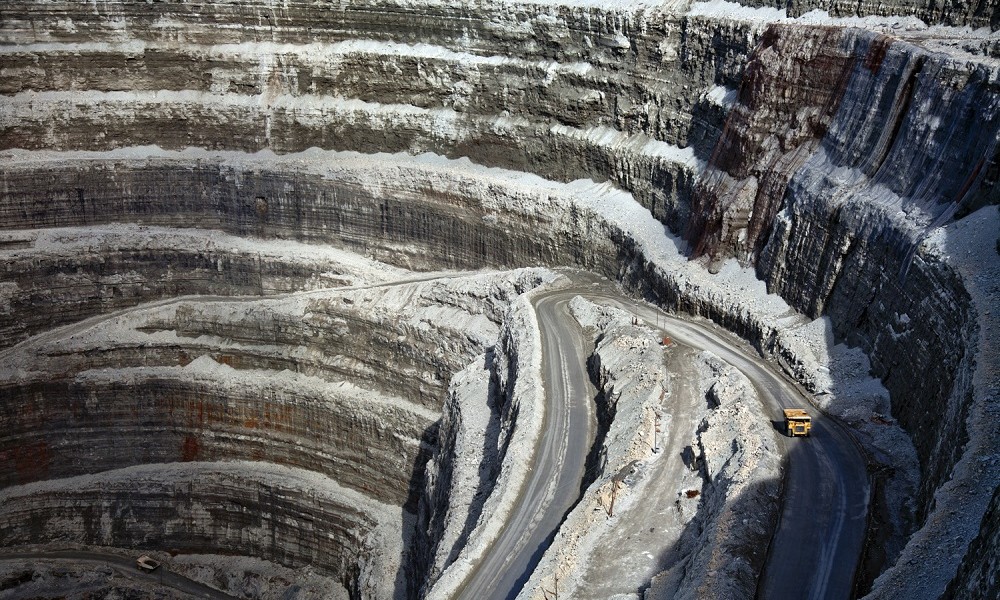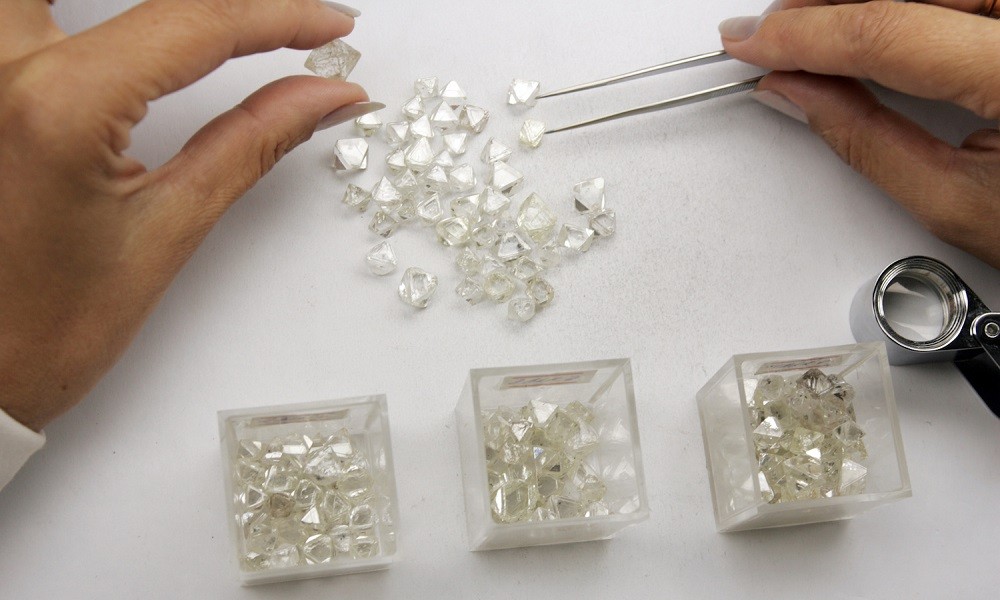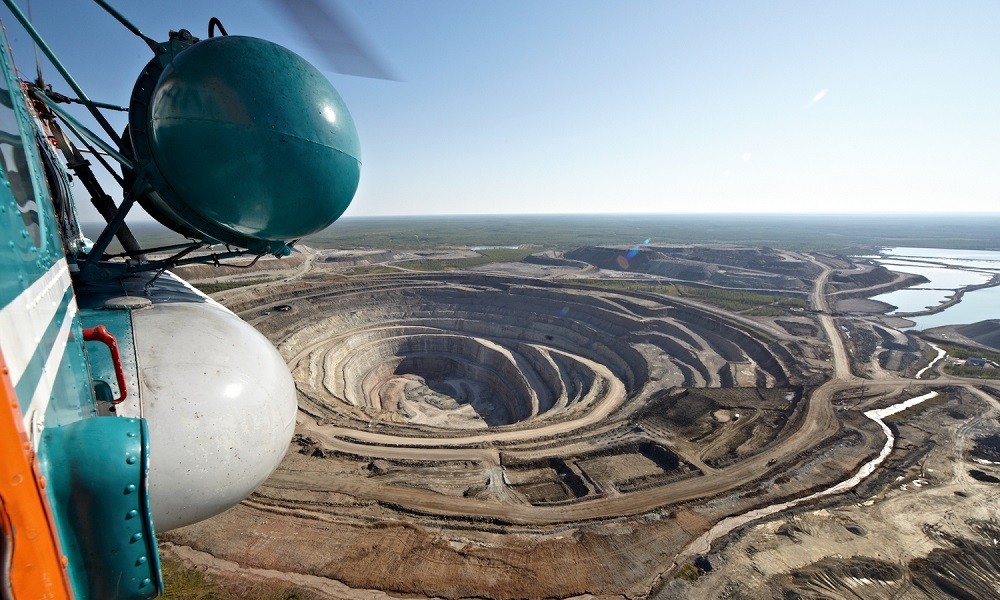After taking a look into the world of De Beers now it is the turn of ALROSA, the “second” biggest diamond producer. For about three years now, the Russian company ALROSA, one of the signatories of the Diamond Producers Association, has been considered to be the biggest supplier of rough diamonds in the world—at nearly 34 million carats per year.
Although De Beers still appears to be the biggest diamond producer in terms of value, ALROSA is now the biggest supplier of rough diamonds in the world in terms of volume. Its share amounts to about 28% of world production of rough diamonds. And on its website, the Group says that it extracts more than a third of global production. In 2014, the situation changed again according to the recently updated figures from the Kimberley Process. Clearly through ALROSA’s contribution , Russia has become the world’s top diamond producer, thus overtaking Botswana, in volume AND in value.
But, in addition to challenging De Beers, ALROSA also stands out as a diamond producer in one important respect: it can count on the direct support of the Russian government. This undeniably separates it from its competitors around the world. Finally, in 2013, the Russian producer clearly announced its future objectives through its first vice-president Igor Sobolev: ALROSA fully intends to dominate the market by 2018 and dethrone De Beers from its position as historic leader…
Let us take a look at its history, which may help us to see more clearly.
ALROSA, a “young” company that is rising fast?
ALROSA is a public company whose main shareholders are the Russian Federation (a little over 43%) and the Republic of Sakha, formerly Yakutiya (north east of Siberia; with a holding of a little more than 25%). Its current President Andrey Zharkov was elected to the head of the company on 23 April 2015, as a successor to Fyodor Andreev (deceased) who was appointed by Vladimir Putin. Andrey Zharkov was an official from 2010 to 2015, for Gokhran*.
Most of ALROSA’s diamond production is located in Sakha, and it is ALROSA that mines most of the diamonds in Russia (roughly 95% to 97% according to most estimates).
Although Russian diamond mining may go further back in history, it only became economically significant for the country from the 1950s. This was when the Zarnista mine was discovered in Sakha. In 1955, the Mir (Mirny) and Udachny (Oudatchni) mines were discovered—these are still big (they came into operation much later). These discoveries were the first in a long series and prospection led to the discovery of many seams across Russia—in Sakha particularly (today ALROSA extracts over 30 million carats in Sakha: 34 million in 2013 for information).

In 1957, the Yakutalmaz Trust mining company was therefore created to implement the first diamond mining and sales program. As a small side note here: it has to be said that the climatic conditions and constraints in Siberia make the extraction costs very high! In 1959, the first notable exports of Russian diamonds occurred. Again in 1959, the “Yakutalmaz Group of Company” became Yakutalmaz Production and Scientific Association. The investments in these mining projects (extraction, high technologies, subsidiaries, etc.) and their rapid development were a blessing for the Republic of Sakha.
In February 1992, the publicly owned ALROSA Company Limited was founded by a decree issued by the President of Russia (Decree 158C), combining amongst other things production (Yakutalmaz) and research activities.
In the following years, ALROSA undertook a vast program of prospection and partnered with mining consortiums in Africa (Catoca in Angola for example). Whilst remaining focused on extracting and selling rough diamonds, ALROSA continued its policy of international development, creating—like De Beers, with whom it had some commercial partnerships at one time (before encountering problems with fair competition laws)—sales (United Selling Organisation) and diamond-valuing units.

From the 2000s, it developed cutting activities, still with the idea of supporting the production of rough diamonds.
ALROSA has been listed on the Moscow stock exchange since 28 October 2013 (16% of the company’s shares were sold for nearly 41.3 billion rubles—roughly €900 million)
Outlook for development = world conquest!
ALROSA’s activity remains focused on mining and selling rough diamonds. Its cutting business is considered as secondary. The company is supported by Gokhran*, an institution of the Russian state, which is a repository for precious stones and metals. If it can find no purchaser for its rough diamonds, they can be acquired by Gokhran, which shelters the company from the current vagaries of the market. You should note however that, in spite of difficulties in the diamond industry in 2015 and the pressure on producers, ALROSA claims not to have sold any rough diamonds to Gokhran this year.
ALROSA, like De Beers, manages its customers through long-term supply contracts via the ALROSA Alliance system. The company grants them the ALROSA Alliance logo, as proof of their accreditation, the quality of the gems they procure and the “responsible” standards advocated by the diamond producer. Part of ALROSA’s production is sold through auctions—the Specials. These sales divisions are located in the large diamond centers: Antwerp, Ramat Gan, Dubai, Hong Kong, New York and London.
ALROSA is as essential as De Beers in offering traders with a high-quality and diverse range of diamonds.

Coming back to recent figures, in 2014, the company produced 36.2 million carats of rough and sold 39.6 million (the company’s own figures). In volume terms, 65% of their production is gem quality or semi-precious, which amounts to about 95% of the value of ALROSA’s output.
There has been an announcement of a fall in the production of diamonds in the next twenty years, as some of the current seams are exhausted. Yet, it is interesting to note that ALROSA’s resources should not run out in the short-term according to research and forecasts in Russia. Its resources are as high as nearly 600 million carats (more than 1 billion according to some figures), which offers a few years of tranquility. Remember that, in addition to Russia, the company owns mines or shares in mines in Zimbabwe, Botswana and Angola. ALROSA also extends the life of its mines by exploiting their underground sections…
In this mid-year 2015, when rough prices were under considerable pressure—to which De Beers succumbed in its sight in July (an event worth remembering surely)—ALROSA did not reduce its production, considering that the cost of an interruption or closing a mine would not be profitable. And, we must remember that profit is the prime objective. But, although the company may only have lowered its prices once in 2015, its inventories are increasing and it must make a gesture to traders to demonstrate that it understands their difficulties. The producer should therefore lower its prices by about 10% in its sale in September, whilst maintaining a high volume.
In light of its (recent) history and its strategy, is it not surprising that ALROSA has joined the Diamond Producer Association? But, when you plan to be the biggest diamond producer it would seem outrageous not to be part of such a big project, involving the representatives of the sector. Next, ALROSA needs to retain its head start and its predominant position, whilst maintaining the influence on prices that it shares with De Beers. Finally, unless we are counting on an increase in consumer demand—which current figure do not seem to suggest—ALROSA needs to maintain this minimum demand…
* Gokhran is responsible for purchasing, storing, selling and using precious metals, gems, jewels and minerals for the Russian Ministry of Finance.
Picture : source ALROSA website.
